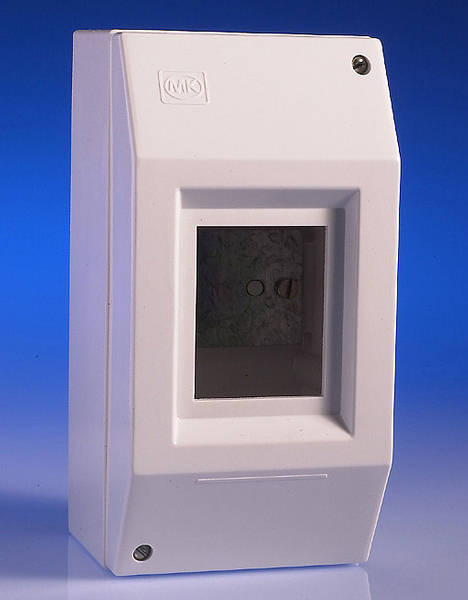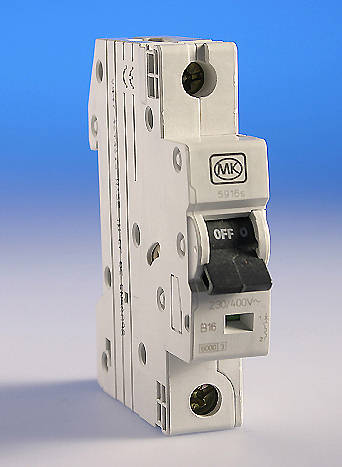I am replacing a large 'old' double oven for two single ovens (one of which is a microwave / circothern combi). The total wattage for the 2 singles is the same as the old double oven. Can I therefore replace the single cable connecting outllet with a double outlet to accommodate 2 cables from the 2 single ovens. I have a single control switch to the radial circuit. The Consumer Unit fuse system says its B40 and should be able to accommodate a total wattage of about 7 kWs. Thanks.
You are using an out of date browser. It may not display this or other websites correctly.
You should upgrade or use an alternative browser.
You should upgrade or use an alternative browser.
Replacing Double Oven
- Thread starter BUENQUIRY
- Start date
Sponsored Links
BUENQUIRY, you should have two singles. Or two FCUs. The double socket is not intended to have two heavy-load appliances connected to it. It was originally designed for convenience, so that you might have one heavy appliance, such as an elewctric heater, and one light appliance, such as a table lamp.
Sponsored Links
Hi JohnD, first many thanks for the reply, especially seeing as I'd tagged onto BUENQUIRY's post!
Can you please confirm that each single oven (drawing 3.3kW) should be hardwired to it's own cooker cable plate, with both cooker cable plates sharing the same CCU/cooker switch via 2 lengths of 6mm cable? The cooker's radial circuit uses 6mm cable from the 32A MCB at the CU.
(I've decided to wire the hob's ignition to the kitchen ring main via a switched FCU)
Can you please confirm that each single oven (drawing 3.3kW) should be hardwired to it's own cooker cable plate, with both cooker cable plates sharing the same CCU/cooker switch via 2 lengths of 6mm cable? The cooker's radial circuit uses 6mm cable from the 32A MCB at the CU.
(I've decided to wire the hob's ignition to the kitchen ring main via a switched FCU)
I think you'd do better to have each appliance fused separately.
One way would be to have 13A single unswitched socket outlets, one for each appliance, with a separate 20A DP switch above the counter controlling each socket and fed from the 32A radial. Then you can put the appropriate sized fuse cartridge in each appliance's plug. Don't use double sockets.
Another way would be to have an switched FCU for each appliance, fed from the 32A radial, each appropriately fused, either with a flex outlet going to the appliance, or hardwired to an outlet under the counter.
In either of these approaches, you are treating the 32A supply as a kitchen radial, with three appliance outlets on it, individually fused.
One of the advantages of the individual socket and plug is that it is easy to unplug each appliance for cleaning and maintenance.
You need an isolating switch, in plain view, easily accessible, for each appliance so that it is obvious what it does, and so that anyone can switch off the appliance for example if it goes wrong or catches fire.
One way would be to have 13A single unswitched socket outlets, one for each appliance, with a separate 20A DP switch above the counter controlling each socket and fed from the 32A radial. Then you can put the appropriate sized fuse cartridge in each appliance's plug. Don't use double sockets.
Another way would be to have an switched FCU for each appliance, fed from the 32A radial, each appropriately fused, either with a flex outlet going to the appliance, or hardwired to an outlet under the counter.
In either of these approaches, you are treating the 32A supply as a kitchen radial, with three appliance outlets on it, individually fused.
One of the advantages of the individual socket and plug is that it is easy to unplug each appliance for cleaning and maintenance.
You need an isolating switch, in plain view, easily accessible, for each appliance so that it is obvious what it does, and so that anyone can switch off the appliance for example if it goes wrong or catches fire.
Hi JohnD, thanks again for the advice. I like the idea of the individual 13A unswitched sockets, however can they cope with the sustained >14A current drawn by each oven, e.g. during a pyrolytic cleaning cycle?
Regarding the isolating switch being in plain view and easily accessible, can the isolating switch/switches be located either in the cupboard adjacent to or below the (built-in) ovens using surface mounted boxes, or is this considered bad practice? I'm just trying to reduce the number of switches and sockets visible above the worktop.
Regarding the isolating switch being in plain view and easily accessible, can the isolating switch/switches be located either in the cupboard adjacent to or below the (built-in) ovens using surface mounted boxes, or is this considered bad practice? I'm just trying to reduce the number of switches and sockets visible above the worktop.
these ovens sound rather unusual. single ovens in the UK usually take about 10Amps, and it is rare to find one that won't go on a 13A plug. Have a look at the makers literature and see what it says. Current drawn will vary a bit by voltage (UK is usually about 240v but can be higher or lower).
Usually electric cooking appliances (being thermostatically controlled) won't run at max load for long uninterrupted periods. i don't know about pyro ovens. a 13A fuse will run for a while at a modest overload, I just had a look for my table of curves and couldn't find it. I'm sure someone clever will be along in a minute.
As for hiding the isolators, that's a terrible idea. When one of your children has her hand stuck in the grill element, you want whoever rushes into the kitchen to see the switch immediately, and to know what it's for.
Besides, I like to see plenty of outlets in a kitchen. One every 60cm is not too many. Have a look at "socketwall" if you can find it.
Usually electric cooking appliances (being thermostatically controlled) won't run at max load for long uninterrupted periods. i don't know about pyro ovens. a 13A fuse will run for a while at a modest overload, I just had a look for my table of curves and couldn't find it. I'm sure someone clever will be along in a minute.
As for hiding the isolators, that's a terrible idea. When one of your children has her hand stuck in the grill element, you want whoever rushes into the kitchen to see the switch immediately, and to know what it's for.
Besides, I like to see plenty of outlets in a kitchen. One every 60cm is not too many. Have a look at "socketwall" if you can find it.
Fair point about the isolating switch being highly visible. Would you say the same applies with SFCUs for other appliances too? This is what the kitchen fitter recommended but I realise it's aethetics vs practiclilities (and regs of course!)
Thanks for the replies folks. Much appreciated. My thoughts are to run a 6 mm (45A) cable from the existing cooker cable outlet into a junction box that would be also be fused to protect each oven separately. Does any of the respondents or their contacts know of the existence of such 'fused' junction boxes? BUENQUIRY
Yeah, they are called consumer units. You have a larger version next to your lectric meter, with lots of MCBs in it. These are available in 2-way format, so that you could have 2 x 16A MCBs protecting the 2 ovens seperately. And MCB does the same as a fuse.BUENQUIRY said:Thanks for the replies folks. Much appreciated. My thoughts are to run a 6 mm (45A) cable from the existing cooker cable outlet into a junction box that would be also be fused to protect each oven separately. Does any of the respondents or their contacts know of the existence of such 'fused' junction boxes? BUENQUIRY


JohnD said:Ah, a sub-main. Good idea. I had been thinking about a gridswitch arrangement with DP switches and fuseholders but didn't think I could talk through it.
I'd do it my way because each oven draws just over 3Kw, therefore it might be considered bad practise to put them on 13A fuses, and they would be at capacity. Using 16A MCBs is a better solution. In fact, you could hide this in a cupboard and have 2 20A switches on a gridswitch down the line.
Thanks once again folks for great advice and suggestions. Firstly, I may have misled slightly by stating that I was replacing a double oven with two singles. The latter are essentially two 'smaller ovens' (and not conventional singles) and hence their power need when both are in operation (3.6 kW plus 2.8 kW) would not be any different from the original old large (double oven at 6.8 kW)!!
A qualified electrician who has done work for me thinks that I am being too careful in trying to have a separate 'fused' circuit for each of the new ovens. He sees no problem in connecting the cables from the two new ovens into the original cable outlet which essentially would be no different from my having to install a junction box and then connect the cables from the new ovens via that.
I can see logic in this suggestion and as there is hardly any space within the existing kitchen unit, I do not see logic in extending cable all over the place.
Would love to hear a comment or two on this one.
A qualified electrician who has done work for me thinks that I am being too careful in trying to have a separate 'fused' circuit for each of the new ovens. He sees no problem in connecting the cables from the two new ovens into the original cable outlet which essentially would be no different from my having to install a junction box and then connect the cables from the new ovens via that.
I can see logic in this suggestion and as there is hardly any space within the existing kitchen unit, I do not see logic in extending cable all over the place.
Would love to hear a comment or two on this one.
DIYnot Local
Staff member
If you need to find a tradesperson to get your job done, please try our local search below, or if you are doing it yourself you can find suppliers local to you.
Select the supplier or trade you require, enter your location to begin your search.
Please select a service and enter a location to continue...
Are you a trade or supplier? You can create your listing free at DIYnot Local
Sponsored Links

